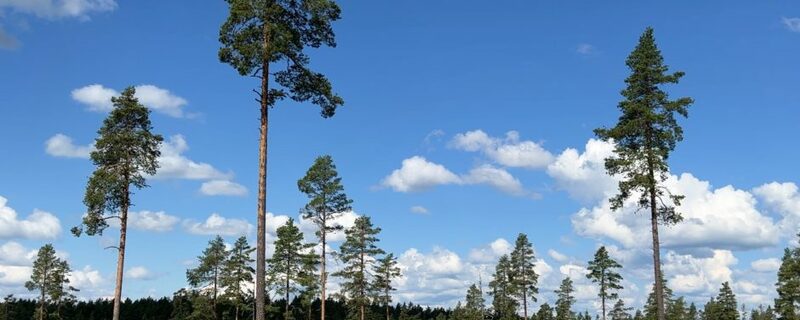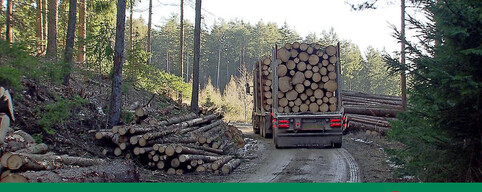

In forestry, there are different ways to cut down a forest. Seed-regenerative felling is one of them and it affects the landscape differently than continuous felling. The main objective of seed-regenerative felling is to ensure the growth of a new forest. This is done by leaving what is called "plus trees" which will spread the seeds. To ensure the seeds are sufficiently scattered, 3-15 trees per hectare are left.
A major advantage of seed regeneration felling is that more trees remain, resulting in a different picture of the forest.
When the new pines are well established, preferably before they reach one meter, the seed trees should be cut. Irrespective of the type of felling, it is necessary to always leave trees in their life cycle. These are trees that are allowed to grow until they die naturally. These trees are significant because they provide a habitat for several species, and their life cycle is important for maintaining species diversity in the forest.
Soil preparation is an auxiliary measure that can create better conditions for the survival and growth of both plants and seeds. A mixture of humus and mineral soil is ideal for germination. Rusty soil appears when deep soil preparation takes place, and it increases the risk of pushing out small sprouts by frost. Soil preparation should be carried out where the humus layer is three centimeters thick.
When large portions of the humus layer are removed at the site of soil preparation, seeds and plants can easily access the mineral soil, which contains more water and nutrients. Additionally, soil preparation can protect small spruce and pine plants from attack by the spruce weevil (Hylobius abietis) that likes to gnaw the thin bark of small plants.
In the environmental certification of forestry, the requirements of natural diversity, outdoor life, reindeer husbandry, risk of erosion, water runoff, and cultural heritage should be considered. Soil preparation must still end in a sufficient number of approved germination sites, despite the various requirements.



